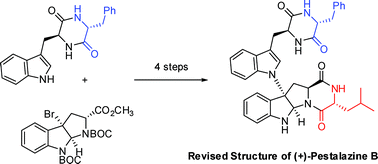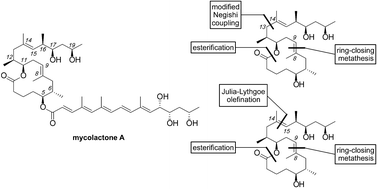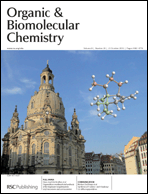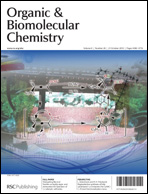Aaron Socha and Jason Sello at Brown University, USA, describe an efficient method to convert both virgin and waste vegetable oils into biodiesel in a single reaction vessel by using scandium and bismuth triflates as catalysts.
Some of the advantages of this new environmentally friendly method are:
- The lack of corrosive chemicals
- The high efficiency: conversion in 6 times faster
- The simplicity: one step reaction in one vessel
- The use of environmentally friendly and recoverable catalysts
Not surprisingly, this paper has been highlighted in many different outlets. These are just some of them:
- Science Magazine: http://www.sciencemagnews.com/chemists-simplify-biodiesel-conversion.html
- R&D Magazine: http://www.rdmag.com/News/Feeds/2010/10/manufacturing-brown-university-chemists-simplify-biodiesel-conve/
- Laboratory Equipment: http://www.laboratoryequipment.com/News-chemists-streamline-biodiesel-conversion-100810.aspx?xmlmenuid=51
- NetIndia123: http://www.netindia123.com/showdetails.asp?id=1604567&cat=India&head=Conversion+of+waste+vegetable+oil+into+biodiesel+simplified
- Green Car Congress: http://www.greencarcongress.com/2010/10/brown-20101008.html
- Insider.com: http://www.examiner.com/moreover/organic-chemistry
- Brown University: http://news.brown.edu/pressreleases/2010/10/biodiesel
- The Brown Daily Herald: https://blogs.rsc.org/ob/wp-admin/post.php?action=edit&post=333
- Go Green Save the Earth: http://www.public88.com/gogreen/alternative-energy/biodiesel-chemists-improve-synthesis-of-biodiesel/
You can now read this article for free until the 4th November:
Efficient conversion of triacylglycerols and fatty acids to biodiesel in a microwave reactor using metal triflate catalysts
Aaron M. Socha and Jason K. Sello
Org. Biomol. Chem., 2010, 8, 4753-4756
DOI: 10.1039/C0OB00014K, Paper
From the Organic & Biomolecular Chemistry editorial office we wanted to congratulate the authors of this paper and encourage them to carry on developing their meaningful research.












 Synthetic studies on the mycolactone core
Synthetic studies on the mycolactone core 
 Hans-Joachim Knölkner and colleagues reveal the link between this beautiful church in Dresden and β-isocomene: silicon
Hans-Joachim Knölkner and colleagues reveal the link between this beautiful church in Dresden and β-isocomene: silicon This colourful and arty cover by Chunling Fu, Shengming Ma and colleagues shows the mechanism of a highly regio- and stereo- selective hydration of 1,2-allenylic sulfoxides.
This colourful and arty cover by Chunling Fu, Shengming Ma and colleagues shows the mechanism of a highly regio- and stereo- selective hydration of 1,2-allenylic sulfoxides.